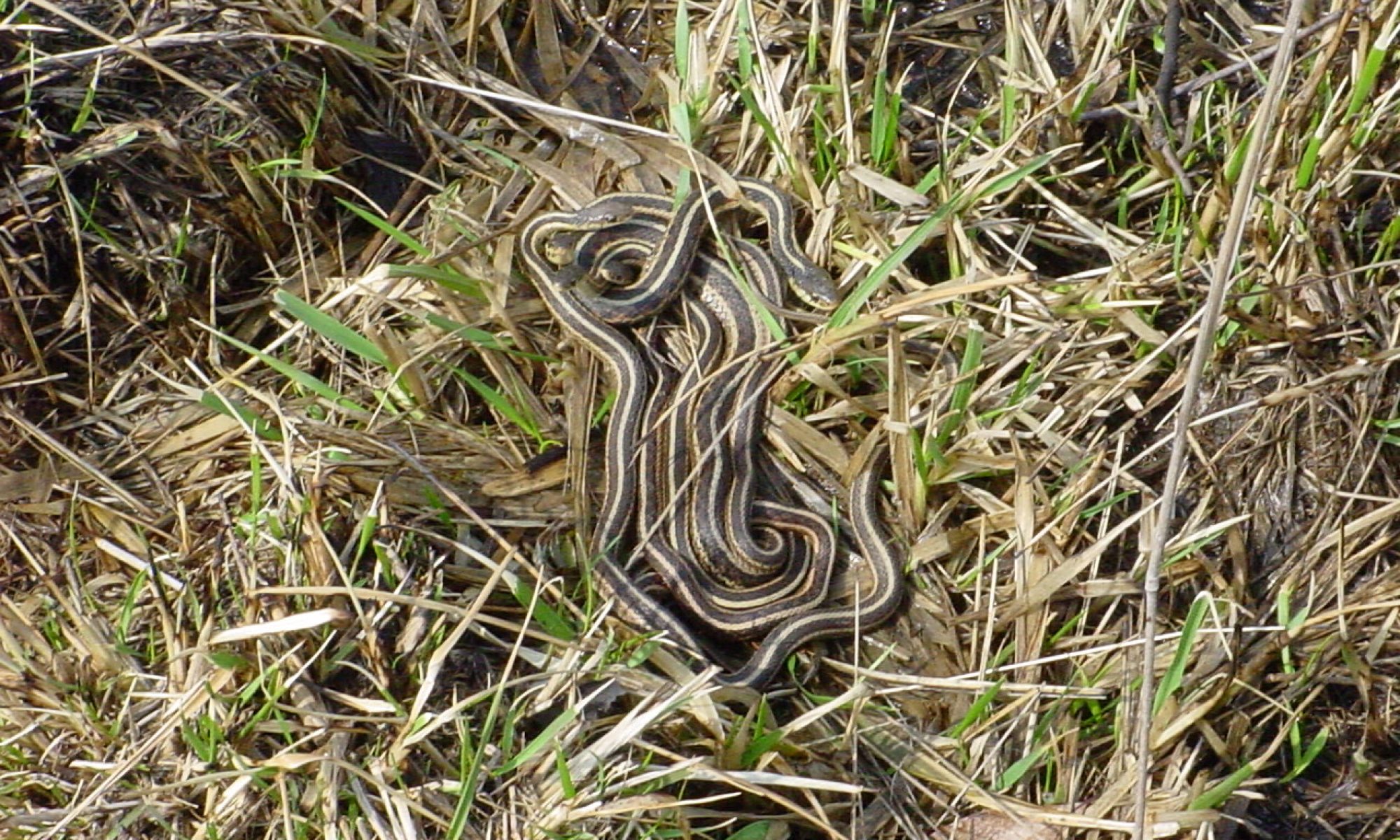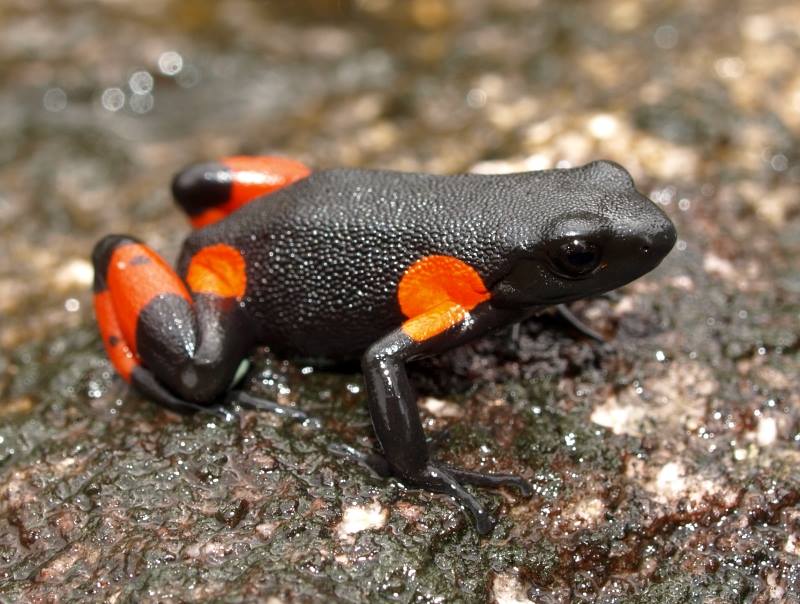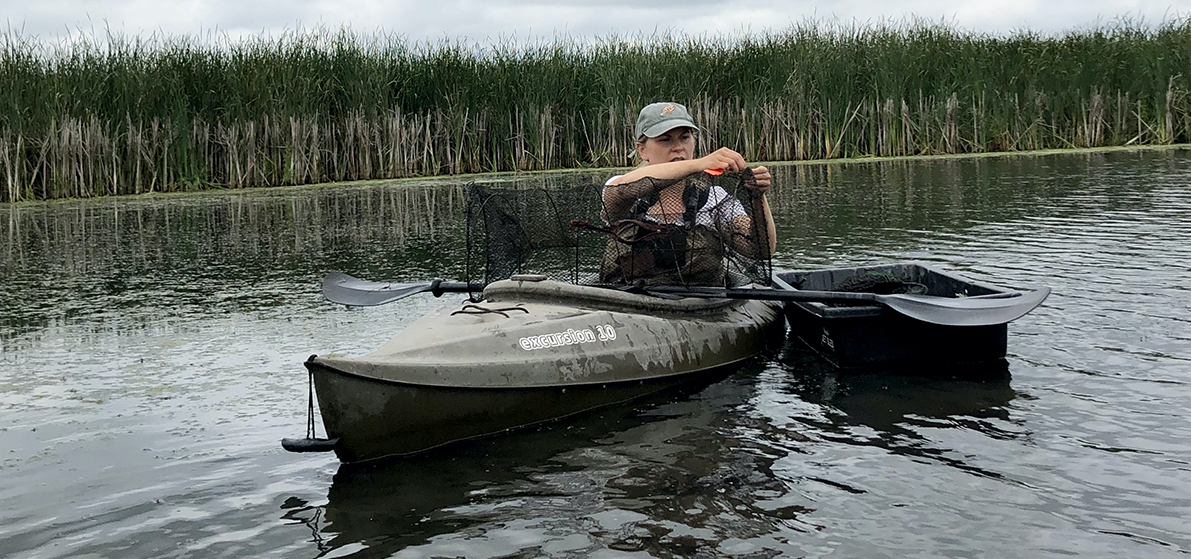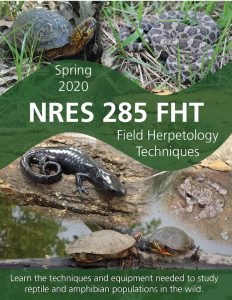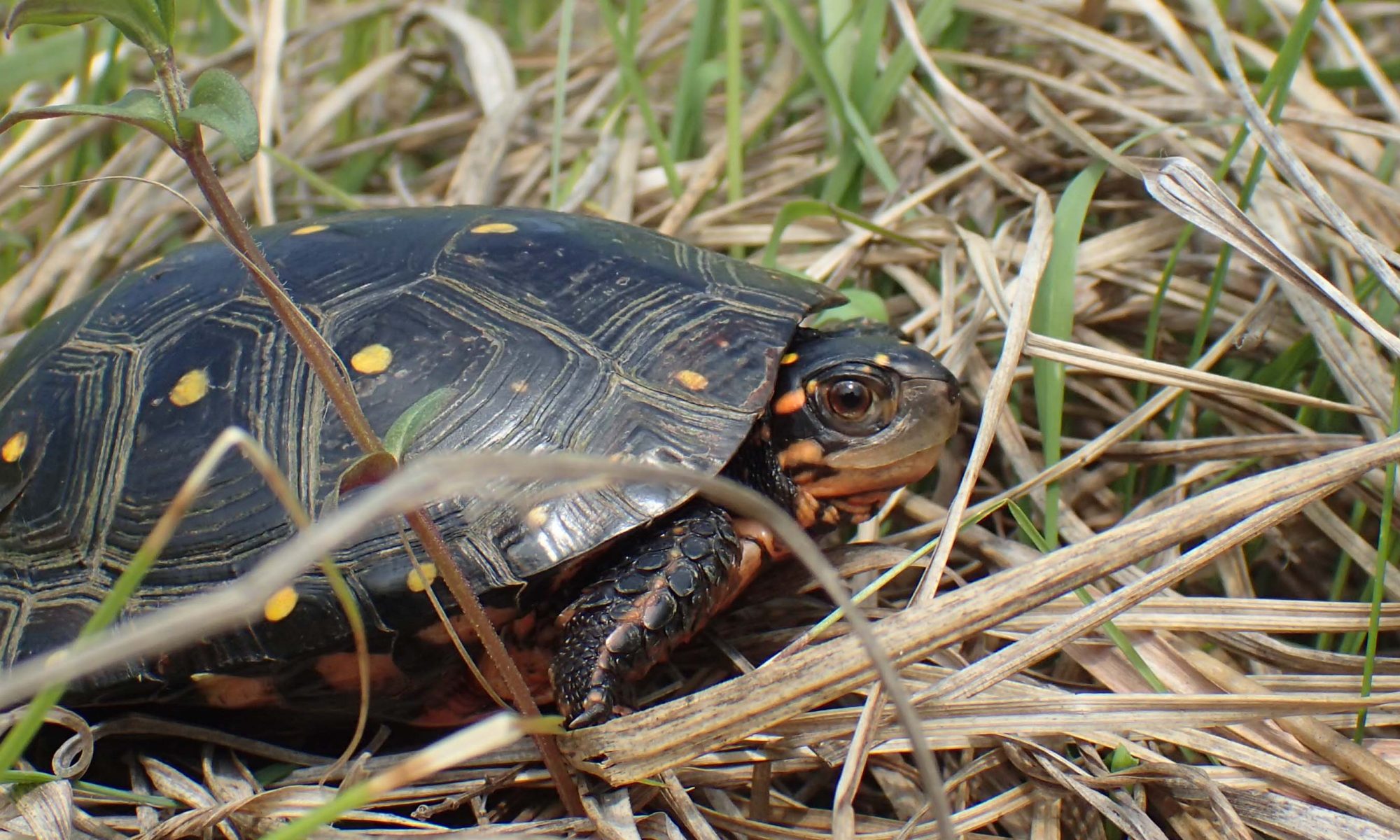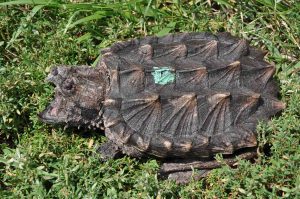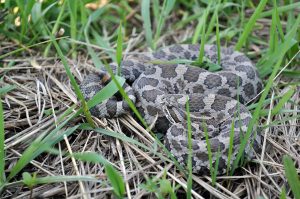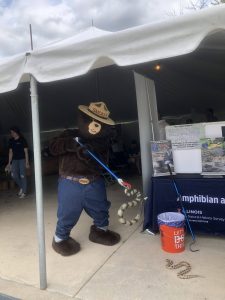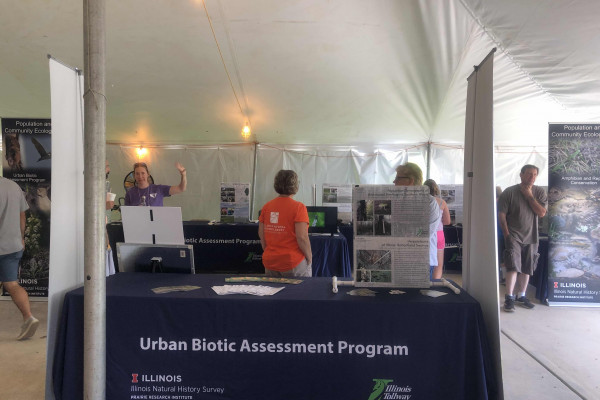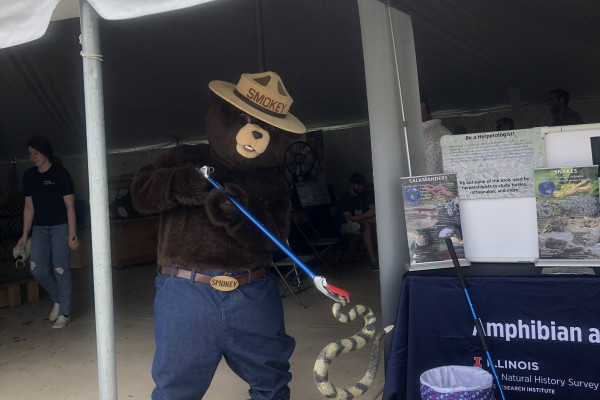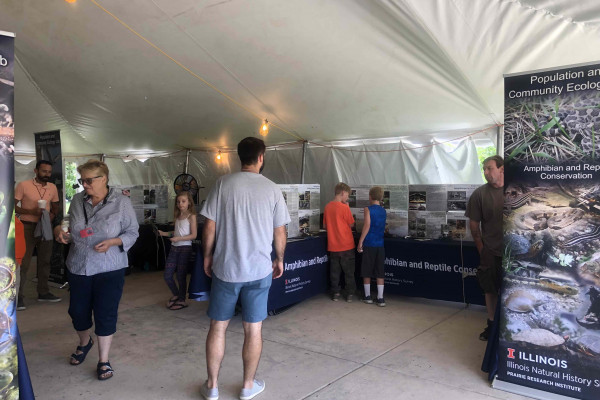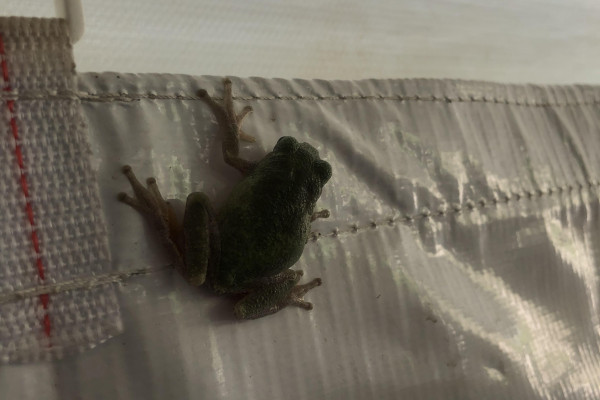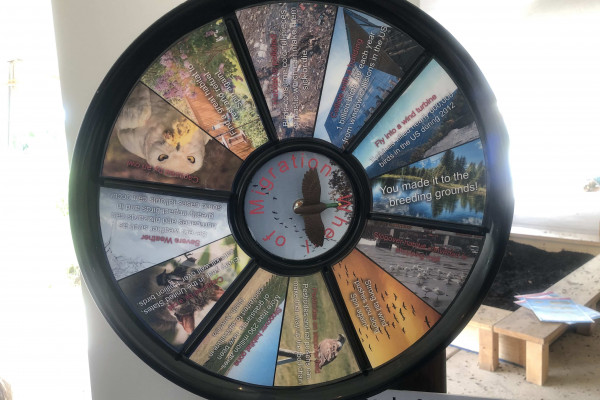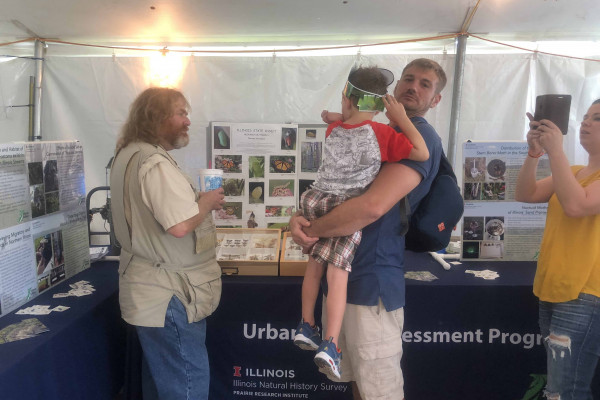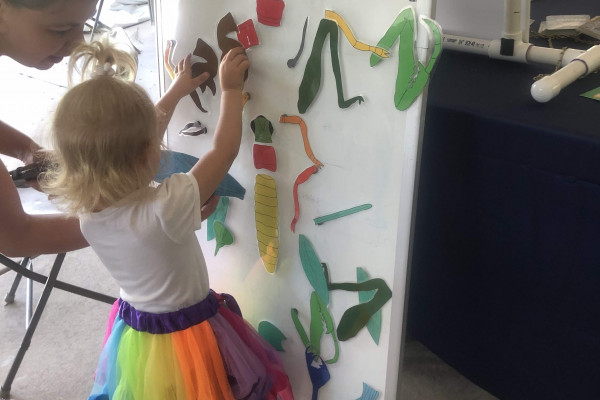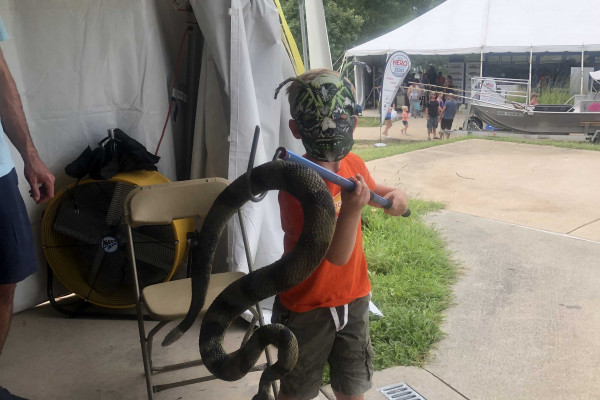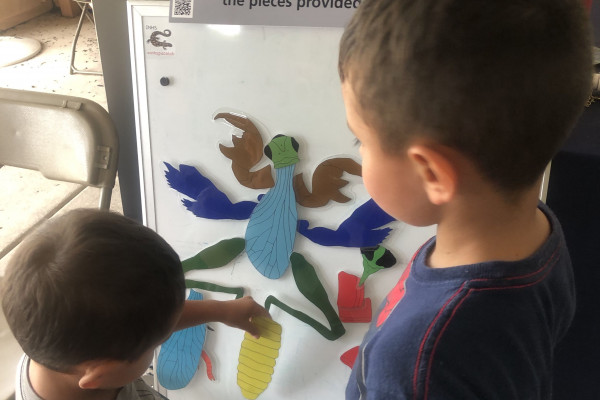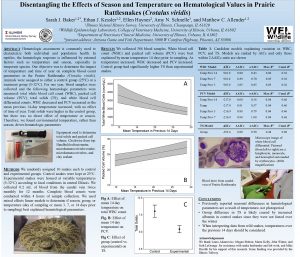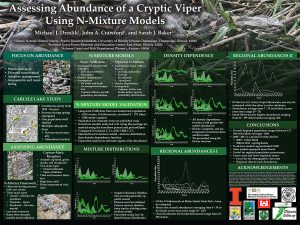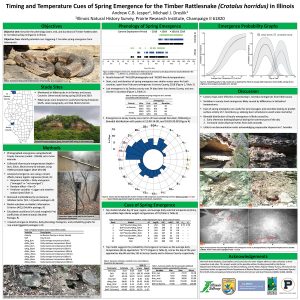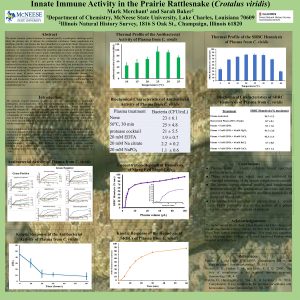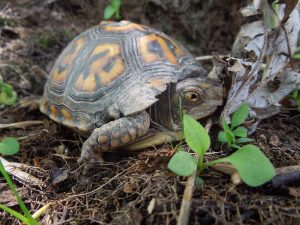 Eastern Box Turtle growth is influenced by environmental conditions which in turn can be influenced by vegetative structure. Removal of Autumn Olive and Russian Olive at a site in Illinois occurred during a 16 year mark-recapture study allowing us to analyze impacts of removal on the growth of turtles. The data showed that removing the invasive plants may not negatively impact the growth of the turtles and that growth is variable by individual. This is attributed to reptile growth being influenced by more than just environmental conditions, including genetics.
Eastern Box Turtle growth is influenced by environmental conditions which in turn can be influenced by vegetative structure. Removal of Autumn Olive and Russian Olive at a site in Illinois occurred during a 16 year mark-recapture study allowing us to analyze impacts of removal on the growth of turtles. The data showed that removing the invasive plants may not negatively impact the growth of the turtles and that growth is variable by individual. This is attributed to reptile growth being influenced by more than just environmental conditions, including genetics.
Read the paper: Edmonds, D., A.R. Kuhns, and M.J. Dreslik. 2020. Eastern Box Turtle (Terrapene carolina carolina) growth and the impacts of invasive vegetation removal. Herpetological Conservation and Biology 15(3):588–596.
